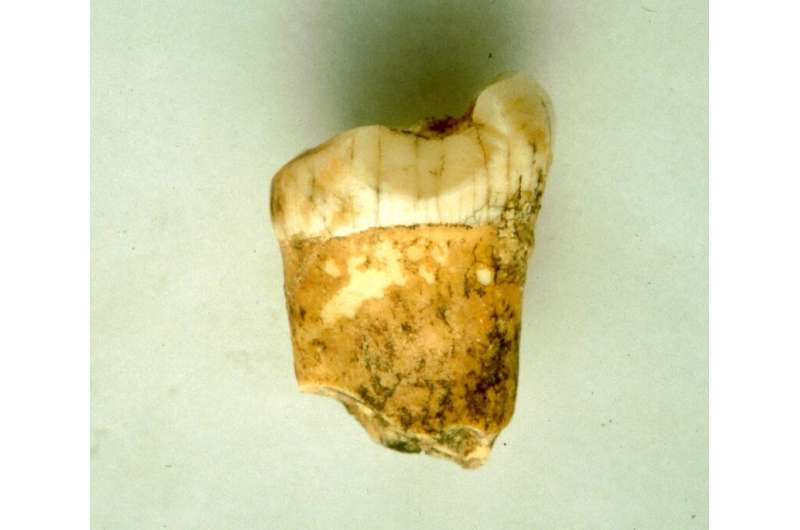Neanderthals were 'top-level carnivores,' tooth analysis suggests
The tooth's owner was primarily a meat eater.

Neanderthals were likely carnivores, a new analysis of the hominins’ dental tartar has revealed.
Scientists made the discovery by analyzing the concentrations of different versions, or isotopes, of zincs in a Neanderthal tooth found in Gabasa, Spain. That analysis revealed that the tooth's owner was a "top-level carnivore", the researchers wrote, and was far less reliant on eating plants than previously surveyed Neanderthals in the region.
Neanderthal diets have long been a subject of debate among scientists. Some studies of Neanderthal dental tartar found in the Iberian peninsula suggested they were omnivores, supplementing their diets with large amounts of mushrooms and plants; other studies point to them eating little besides meat, acquired by hunting reindeers, mammoths, horses and rhinoceroses. The new study, published Oct. 17 in the journal Proceedings of the National Academy of Sciences, used a new analysis technique that could give scientists the tools to get their teeth into the question.
Related: 50,000-year-old DNA reveals the first-ever look at a Neanderthal family
To study the diets of ancient homininians — relatives of humans more closely related to us than chimpanzees — scientists usually look at the concentrations of nitrogen isotopes in bone collagen. The body absorbs and stores nitrogen from food in this collagen. Plants vary in how much nitrogen-15 they absorb, but as you go up the food chain, animal tissues accumulate more and more nitrogen-15 relative to nitrogen-14. If an animal has higher ratios of nitrogen-15 to nitrogen-14, it is likely that the animal ate more meat. But the technique isn't perfect: It only works on bones less than 50,000 years old that were preserved in temperate climates; and it doesn’t differences in the baseline level of nitrogen-15 in different plants.
As the Gabasa tooth could be anywhere between 100,000 to 200,000 years old, the researchers turned to a new technique that analyzed zinc isotopes in the teeth enamel. As animals go up the food chain, their tissue tends to store more zinc-64 relative to zinc-66. The scientists found that the Neanderthal tooth had very low levels of the isotope zinc-66, meaning the tooth was probably from a dedicated meat eater.
Further analysis of the isotopes in the enamel, taken alongside analyses of broken bones found at the site, also reveal that the neanderthal group ate bone marrow but did not consume the blood of their prey. Other chemical clues from the tooth like calcium, taken with the zinc values from the oldest part of the enamel, point to its past owner having been weaned off milk before the age of two.
Sign up for the Live Science daily newsletter now
Get the world’s most fascinating discoveries delivered straight to your inbox.
To confirm their theory that most Neanderthals had carnivorous diets, the researchers plan to use their analysis technique on more teeth from Neanderthals found in other parts of Europe, where different ecosystems may have stretched their diets to include plants. Whether any of these populations munched on enough plants to be classified as omnivores is still an open question.
"Plant consumption existed, but it was probably a very minor part of Neanderthal's diets," first author Klervia Jaouen, a researcher at Géosciences Environnement Toulouse in France, told Live Science. "However, we need more investigations to confirm this. So far, isotope researches suggest that Neanderthal's diets were quite homogeneous (terrestrial carnivores) but other approaches reveal much more diversity."

Ben Turner is a U.K. based staff writer at Live Science. He covers physics and astronomy, among other topics like tech and climate change. He graduated from University College London with a degree in particle physics before training as a journalist. When he's not writing, Ben enjoys reading literature, playing the guitar and embarrassing himself with chess.










